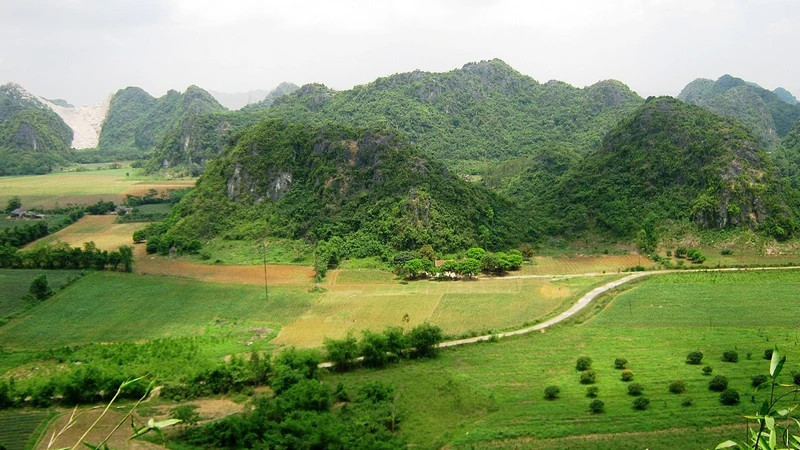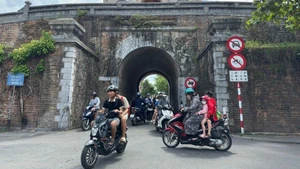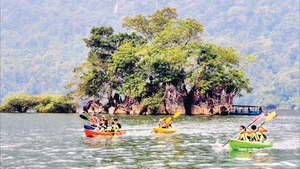On a spring morning, drizzle obscured the limestone mountains. Tong Duc Thuan, Vice Chairman of the People's Committee of Tam Diep City (Ninh Binh Province) and I followed the traces of the ancient Thien Ly Road, up to Ba Doi Pass -where countless footprints of troops marched through this land.
The land of historical defence lines
Since ancient times, the Thien Ly Road running along Tam Diep land has been a vital trade route connecting the north and central regions and an important military route. Ancient troops once marched through here and then left their mark in history.
Standing on the top of Ba Doi Pass in the mist, I looked around in all directions. The lush green valleys stretching at the foot of the pass, and the towering limestone mountains surrounding, created a majestic picture of nature.
Tong Duc Thuan quietly pointed into the distance: "More than 230 years ago, the Tay Son troop stopped. From here, they marched to Thang Long in a lightning-fast march, creating the resounding Ngoc Hoi - Dong Da victory".
The stories he told made me imagine the historic moment more clearly. The footprints of the Tay Son troop, the footsteps of the Ho Dynasty, Trinh Dynasty and Nguyen Dynasty soldiers. All seemed to still echo on every inch of land here.
Not only a stop on the Thien Ly Road, Tam Diep is also considered a steel shield in many wars. This land has marked many conflicts from Ho Quy Ly’s defence line against the Ming Dynasty to the battles between Le - Trinh and Tay Son.
Perhaps the most prominent is the lightning-fast march of Quang Trung-Nguyen Hue in 1789. In Tam Diep, the Tay Son organised forces, divided into many attack directions, directly attacked the Qing, won a resounding victory, and liberated Thang Long on the Lunar New Year of the Rooster.
Tourism development in association with history preservation
Looking down at the valley below Ba Doi Pass, Thuan said "We want to preserve these historical values and turn Tam Diep into a destination not only for tourists to visit, but also for them to feel the breath of history."
Some valleys have developed tourism such as Quen Tho, an attractive eco-tourism destination where visitors can explore majestic limestone mountains and immerse themselves in the peaceful space of nature. Meanwhile, Kem Do offers a wild experience suitable for outdoor activities and trekking with stone, reed banks, green forests and fresh air.
 |
| Quen Tho Valley is becoming an eco-tourism destination attracting many visitors. |
In addition, the ancient Thien Ly Road - the ancient north-south arterial road, passing through Tam Diep, reminds us of the historical Tay Son troop's lightning-fast march to Thang Long. This is an ideal place to learn about culture and history, in combination with experiences of exploring the typical landscape of this land.
With the combination of wild nature, heroic history and eco-tourism development potential, Tam Diep is gradually becoming an attractive destination for tourists who love to explore and experience.
To promote the value of this land, it is necessary to have synchronous solutions: preserving and restoring historical relics such as ancient military defence lines, and traces of battles; developing experiential tours, where visitors can travel along the Thien Ly Road, climb up Ba Doi Pass and immerse themselves in the historical space; building tourism infrastructure, connecting Tam Diep with Ninh Binh’s famous tourist destinations such as Trang An, Bai Dinh, creating an attractive cultural-historical tourism route.
Tam Diep is not only a land bearing the mark of the past, but also full of potential for the future. Standing on Ba Doi Pass in the cold of a spring morning, I felt more clearly than ever the sacredness of history. If properly invested, Tam Diep will become an unmissable destination on Vietnam's tourism map.
















